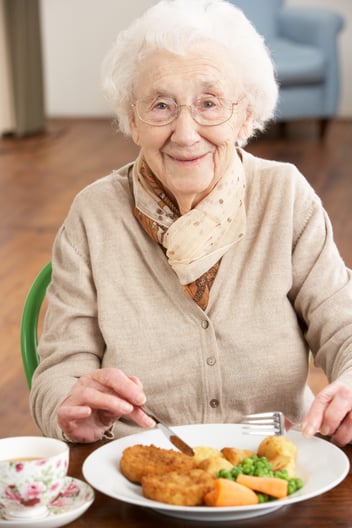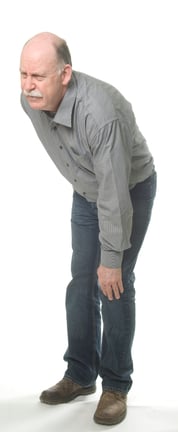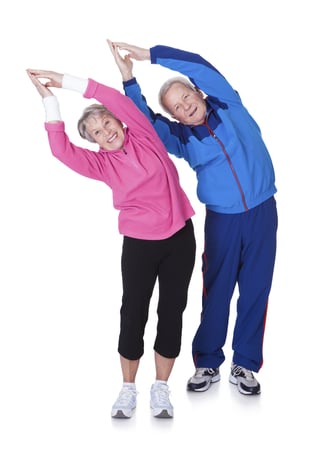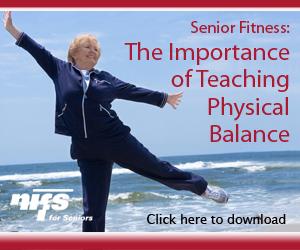.jpg?width=378&name=Senior%20dancing%20GettyImages-504735537%20(1).jpg)
Stay active as you age by putting on your dancing shoes! Fred Astaire said “Dancing is a sweat job!” But you don’t have to break a sweat to obtain the benefits of dancing; they have been proven to be unsurpassable. Dancing can be a fun for your residents, it can add a social element to your community, and it's a really good way to keep exercise exciting!
Teaching line dancing to seniors has allowed me the opportunity to see firsthand how this exercise provides healthy benefits for the mind as well as the body. Any form of dance would suffice in obtaining these wellness benefits, but if you’re worried that you need a partner, know that line dancing definitely doesn’t require one.
Fitness Benefits of Dancing
Here is a list of some healthy reasons to dance your way to fitness:
- Improved cardiovascular, muscular strength, and flexibility.
- Promotes healthy blood pressure, cholesterol levels, triglyceride levels, and blood sugar.
- Coordination improves as you work through the different movements.
- Lung capacity can increase.
- Bone strength can increase; bone loss can be stopped or slowed down.
- Assists with weight control—half an hour of continuous line dancing can burn an average of 300 calories.
- The social aspects of line dancing are obvious. Your sense of well-being and the camaraderie you have with the other dancers is wonderful for your health.
In addition to the above, did you know that dancing is an excellent brain exercise? It integrates several brain functions at once, increasing connectivity. As people age, maintaining memory and continuing to challenge intelligence is a real priority. What better way than to dance? Dancing requires memorizing steps, and that provides mental challenges that are crucial for brain health. Consider the fact that to execute a dance you need to remember the specific steps that flow in a sequence, and the brain has to inform the body how to move in a timely manner.
Not only does the physical aspect of dancing increase blood flow to the brain, but the social aspect of the activity leads to less stress, depression, and loneliness, which can also cause memory issues.
What Dancing Can Do for Your Balance
Dancing is also all about balance. Dancing consists of changing up the steps, arm patterns, formations, speed, and rhythm. All of these factors play a significant role in maintaining balance. Just envision doing the grapevine movement, where you must maintain balance as one leg crosses behind the other all while in motion.
Read our blog [Balance Programs: Are you meeting your residents needs?]
Not to mention that when you are dancing you are also dual-tasking. Dual-tasking has shown to improve gait and balance because everyday life involves doing one or more things simultaneously (walking and talking, or moving forward and looking to the side as examples). Therefore, when you’re moving your feet one way and arms or head the other in a dance routine, you are dual-tasking. Also don’t forget the fact that you’re having to think which steps come next.
Try the Grapevine Movement
Want to get started? Here’s the simple grapevine movement. Safety always comes first. Designate a place where you can reach to hold on if necessary, and modify your movements if crossing one foot behind the other is too challenging.
A grapevine is a series of steps in one direction, stepping to the side. Count 1, 2, 3, 4 to the beat of the music and do the following:
- Step to the right with the right foot.
- Cross the left foot behind the right foot. (You can modify by just slightly stepping back and not crossing entirely.)
- Step right with the right foot, uncrossing your feet.
- Close your feet together.
- Repeat stepping to the left with your left foot as well.


 The holidays are right around the corner, and the first thing that comes to mind is all that food! You don’t want to look like a Santa at the start of the New Year! Well, don’t feel guilty about consuming the goodies; just get smart! If you have an understanding of what it takes to properly fuel your body, specifically as you age, the healthy eating process doesn’t seem so daunting. Older adults have different needs, and there are some key nutrients that are really important to maintain.
The holidays are right around the corner, and the first thing that comes to mind is all that food! You don’t want to look like a Santa at the start of the New Year! Well, don’t feel guilty about consuming the goodies; just get smart! If you have an understanding of what it takes to properly fuel your body, specifically as you age, the healthy eating process doesn’t seem so daunting. Older adults have different needs, and there are some key nutrients that are really important to maintain. 
 How many suffer from joint pain and inflammation? Feel stiff and sore? Deal with lack of circulation, feel tired, depressed or have lack of energy, even have trouble sleeping? If you answered yes to any of these questions, then the big question is why are you not getting a massage?!?
How many suffer from joint pain and inflammation? Feel stiff and sore? Deal with lack of circulation, feel tired, depressed or have lack of energy, even have trouble sleeping? If you answered yes to any of these questions, then the big question is why are you not getting a massage?!?


 Regular physical activity is essential for healthy aging! There are two main questions that I am constantly being ask: how much exercise should I do? and how do I find the time to exercise?
Regular physical activity is essential for healthy aging! There are two main questions that I am constantly being ask: how much exercise should I do? and how do I find the time to exercise?
 The number-one challenge that the aging population faces is balance because the number-one concern is
The number-one challenge that the aging population faces is balance because the number-one concern is 
